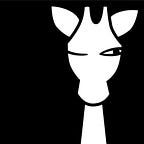Immersive real-time network visualization with Oculus Rift
Network visualization on Oculus Rift
As a follow-up to our experimental tool flocker (a tool for visualizing real-time the evolution of a Twitter network), these days we’re tinkering with real-time visualization of networks using Oculus Rift as the visual interface.
Our purpose is to start exploring common visualization layouts, such as trees, treemaps, maps, networks and so on, with the added value of a third dimension and the ‘presence’ achieved through the Oculus Rift gear.
In this particular case (network visualization), we’re really interested in the viralization dynamics on Twitter, and specially in the relationship between the network ‘salience’ of a user, virality, and the power carried on the message itself.
As explained later, displaying some user metric in the third dimension (in this case, ‘height’ of the nodes is proportional to the follower count of that particular user) can give us some hints about the geometries involved in the viralization of Twitter messages.
In this case, we’ve mixed d3.js and three.js to take advantage of the capabilities of both libraries. The code for this experiment is available on github .
First insights
We’ve rendered a retweet network (i.e: links between cubes [Twitter users] represent a retweet made between those) in real-time (data is captured from the Twitter Streaming API) in three dimensions, making the render VR-ready thanks to a particular Chromium build (explained on the Github code).
The network layout is represented on the ‘x-z’ plane (‘floor’), while the ‘salience’ (number of followers) of a user is represented on the ‘y’ (vertical) axis. This arrangement enables the identification of some emerging viral structures, as follows in the next section.
Emerging viralization geometries
Geometry I: Represents a viralization pattern in which the message is passed mainly because of the central user significance (lots of followers) on the network. The shape is similar to an inverted cone.
Geometry II: Identified with bot networks, in which the message is passed (normally, without much impact) along a network of users (bots) with significance in the lower/mid range (hundreds of followers). The shape is highly irregular, but tends to be similar to an hourglass.
Geometry III: Associated with powerful messages. Viralization makes progress because of the message itself, not because of salience of the users tweeting it. Thus, this structure normally appears as a flat huge disc, with lots of nodes around a central one: the initiator of the message (regardless of her/his number of followers).
Next steps
- Interface enhancement, so you can reach the actual tweets involved in the viralization and associated users information.
- Recreation of useful historic case-studies, like ‘indignados’ movement in Spain or image viralization on Gezi Park revolts (similar to this study by ours).
- A VR-ready web interface for everybody to use the tool, similar to flocker.
References and further reading
WebVR
- Bringing VR to Chrome (Brandon Jones)
- First steps for VR on the web
- Cubes demo for Oculus (Vladimir Vukićević)
Oculus Development
For any comment or enquiry, please contact us on Twitter
